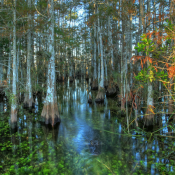 Florida is fortunate to have a unique area of wetlands. The Florida Everglades is made up of sawgrass marshes, coastal mangroves, and some
Florida is fortunate to have a unique area of wetlands. The Florida Everglades is made up of sawgrass marshes, coastal mangroves, and some
flatwoods. According to the EPA, the largest threats to our everglades are, “loss of the natural communities of algae that are defining characteristics of the Everglades, loss of water dissolved oxygen that fish need, and changes in the native plant communities that result in a loss of the open water areas where wading birds feed.”
Learn about Florida’s wetlands in this video created by volunteer Gabby Irons. https://www.youtube.com/watch?v=Vs7mRJmwjmY&t=55s
What can you do to help Florida’s wetlands? There’s actually quite a bit you can do.
1) Check your cleaning products to make sure they are phosphate-free. If they are use them sparingly.
2) Clean up bet waste and don’t let your bets do their business near streams.
3) Maintain your septic system properly if you have one. If you aren’t sure if you are doing it right here is everything you need to know about septic systems. https://www.epa.gov/septic
4) Use less water by running only full loads of clothes, taking shorter showers, and installing water-efficient toilets and showerheads.
5) Wash your car at a car wash where they are required to properly dispose of water or if you insist on doing so at home wash it on the grass where root systems can filter the water before it reaches ground sources.
6) Abide by fertilizer laws.
7) Plant native plants in your garden since they tend to be more accustomed to Florida’s heat and dry seasons.
8) If you don’t use native plants, use mulch to retain moisture and use rain barrels so you aren’t wasting water that is already filtered.
9) Clean up your garbage no matter where you are. Nanoparticles from old or broken-down plastics can be some of the worst threats to wildlife.
10) Reduce meat consumption. Livestock produces over 1 billion tons of waste per year. That waste must go somewhere and too often it makes its way to our wetlands and estuaries.
